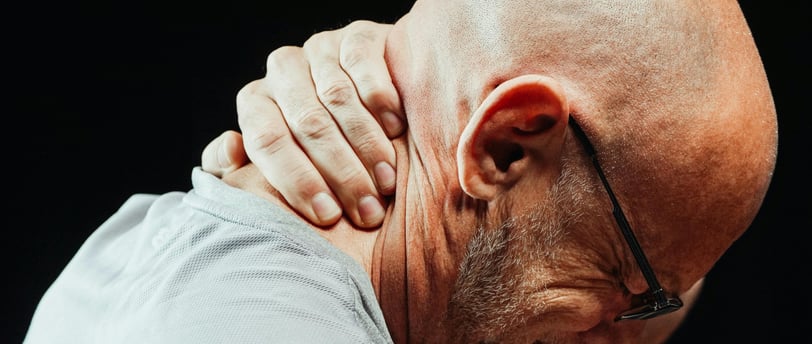Introduction To Cervical Stenosis
2/17/20252 min read


Cervical stenosis, also known as Degenerative Cervical Myelopathy, is a condition that occurs in the cervical spine due to the narrowing of the spinal canal. It affects mainly older individuals and is caused by degenerative changes in the discs and bones of the vertebral column.
Overview of Cervical Stenosis
In the neck, there are 7 bones known as the cervical vertebrae, with cushions (called discs) between each vertebra at the front and a joint between each bone at either side at the back of the spinal cord. The mobility of the neck as part of everyday life inevitably means that there is a normal “wear and tear” aspect to the cervical spine as we get older- both in the discs and in the joints. Between each bone there is a space (foramen) for a nerve to leave the spinal canal, which if narrowed means a compression of the nerve (much like in the lumbar spine). One of the problems that can occur in the cervical spine is called Cervical Stenosis or Degenerative Cervical Myelopathy (DCM). Myelopathy means that the spinal cord is compressed. This can occur when the spinal canal is restricted due to degeneration in the discs and bones (stenosis), causing the cord to get narrower.
Who Gets Cervical Stenosis?
Age-related cause of cervical stenosis
Spinal cord stenosis (abnormal narrowing) affects mainly older individuals and results from continuous, very slowly increasing degenerative changes affecting the mobile segments of the vertebral column. The intervertebral discs become less flexible and the small joints between vertebrae become less mobile. These 2 flexible components of the vertebral column try to perform their function despite these changes. Ligaments on both the front and the back of the spine become thicker because they are no longer stretched. The thicker these ligaments become, the more they press on the spinal cord from the front and the back. This pressure leads to a decrease in the blood supply in this area and consequently to the deterioration of the spinal cord function.
Other causes of spinal cord narrowing
Other less common causes of spinal cord narrowing are: fractures, tumours, infections and congenital abnormalities.
Source: Eurospine Patient Line
Contact Information
E-mail: yunus.neurosurgery@gmail.com
NBC Hospital Jakarta: +6281196509963
Mayapada Hospital Kuningan: +6282112302521
EMC Hospital Sentul: +6287700146777
Connect On Social Media
TulangBelakang.ID for
Yunus Kuntawi Aji, MD
© 2025 TulangBelakang.ID for Spine Surgery and Spine Care. All Rights Reserved.
TulangBelakang.ID Spine Clinic: National Brain Center Hospital Mahar Mardjono Jakarta, Mayapada Hospital Kuningan, EMC Hospital Sentul | Indonesia
